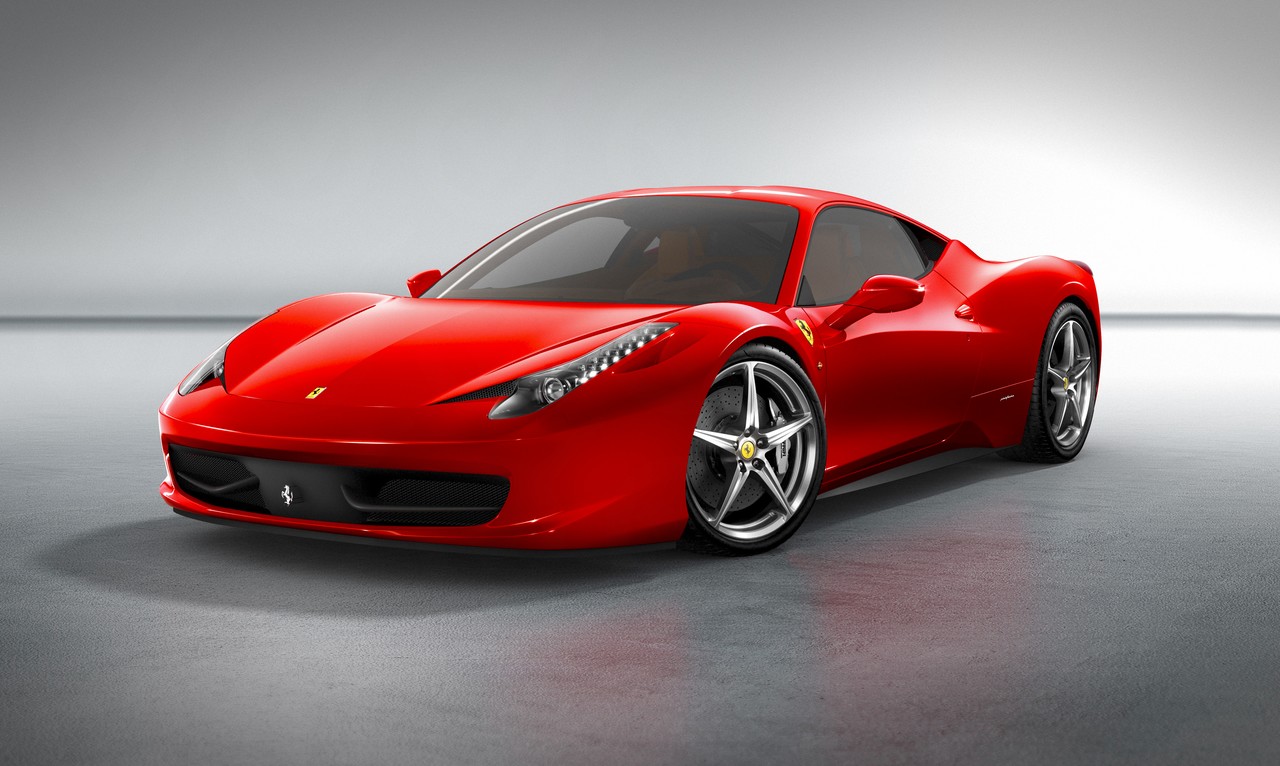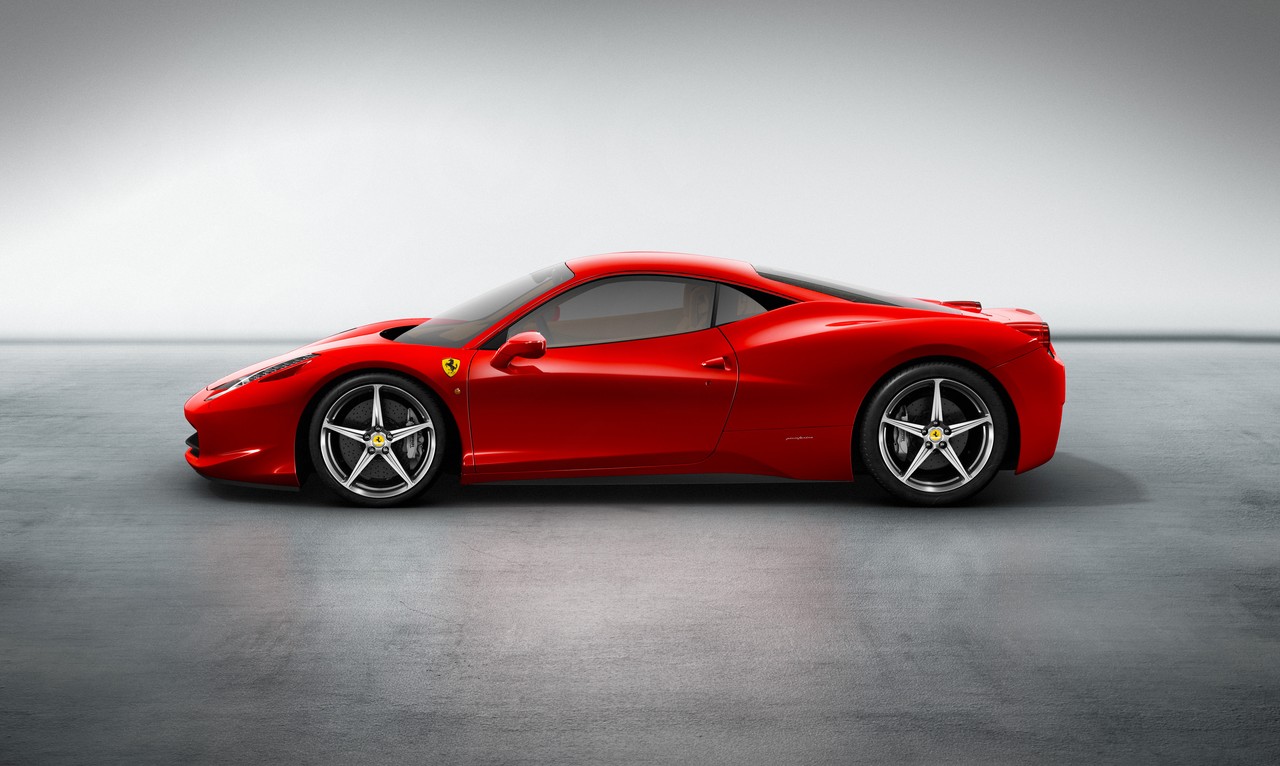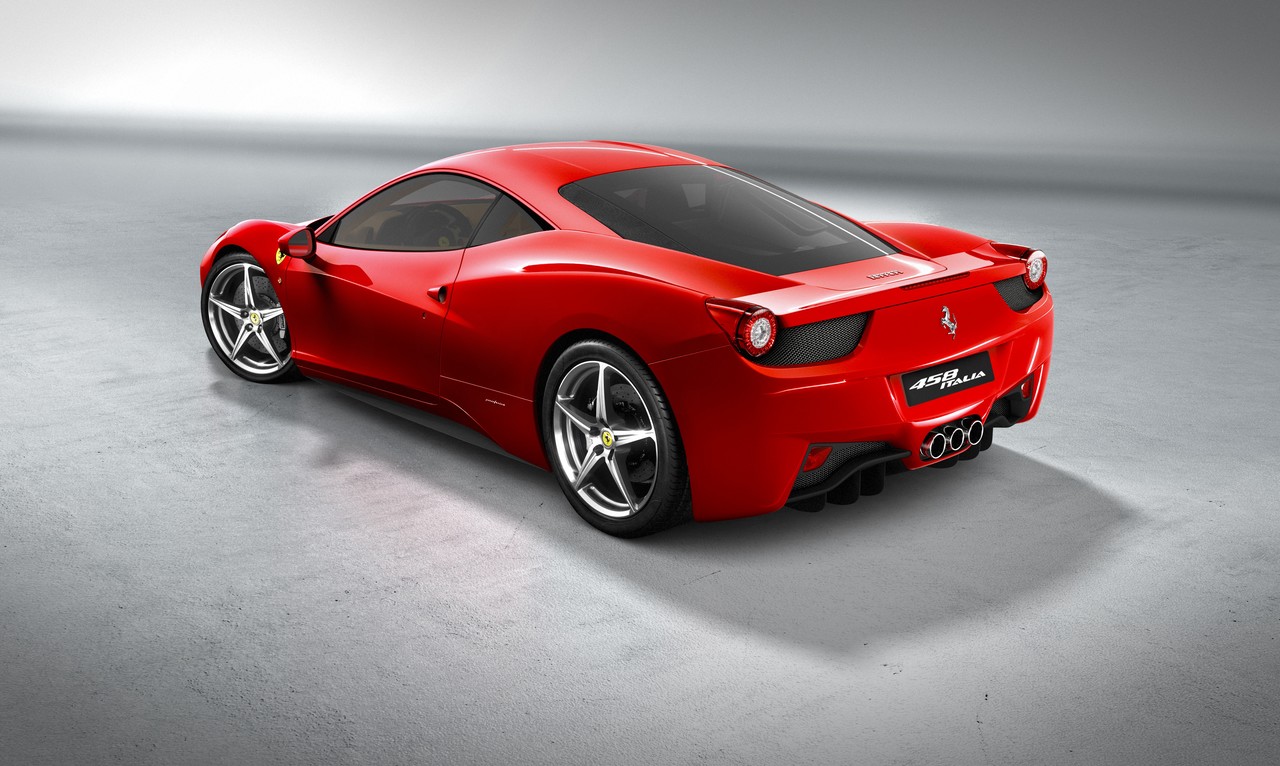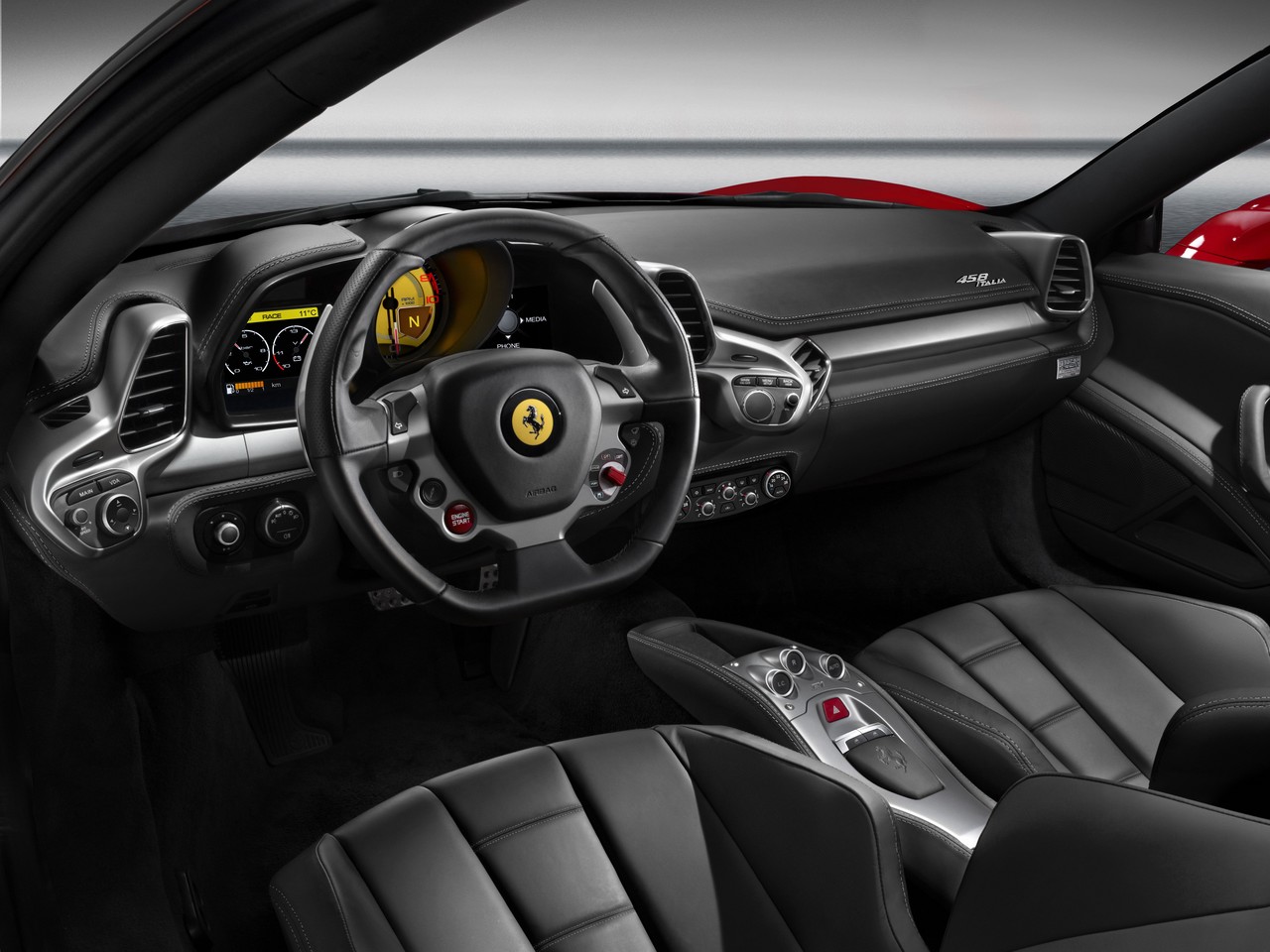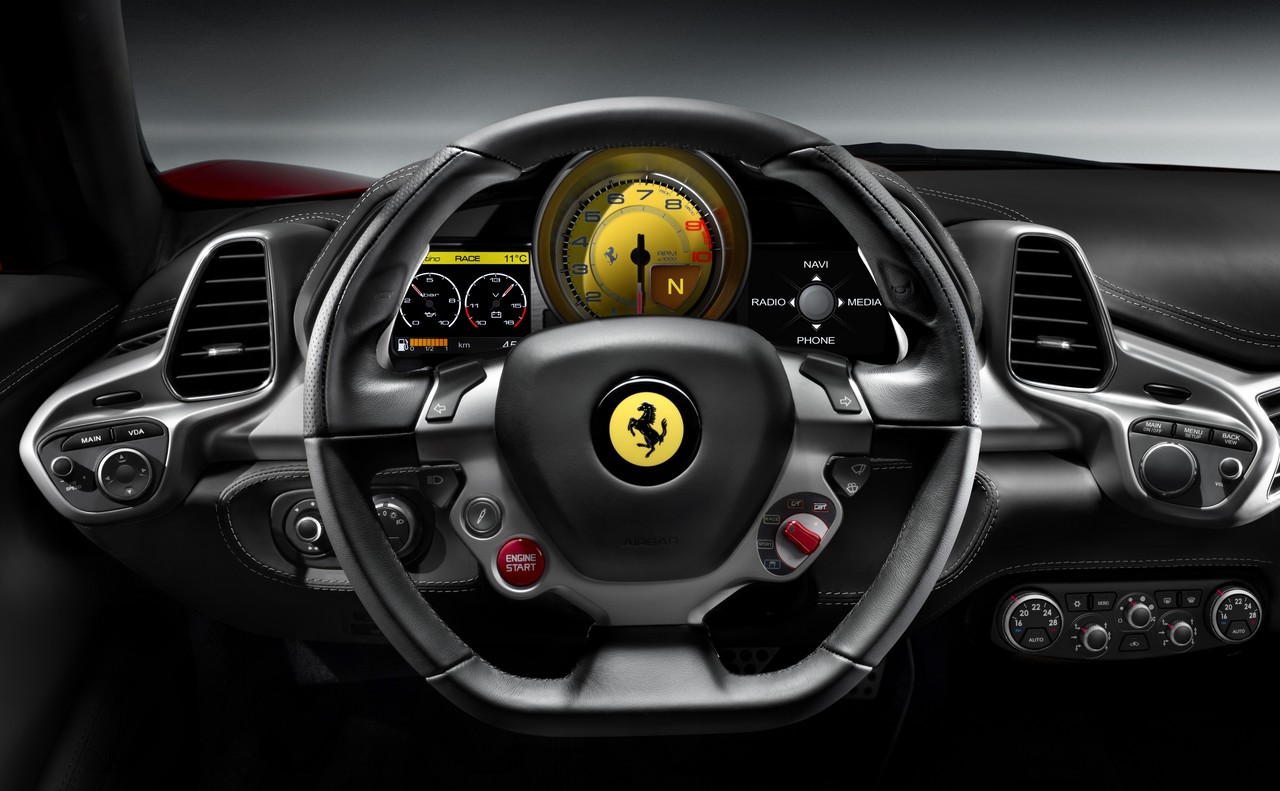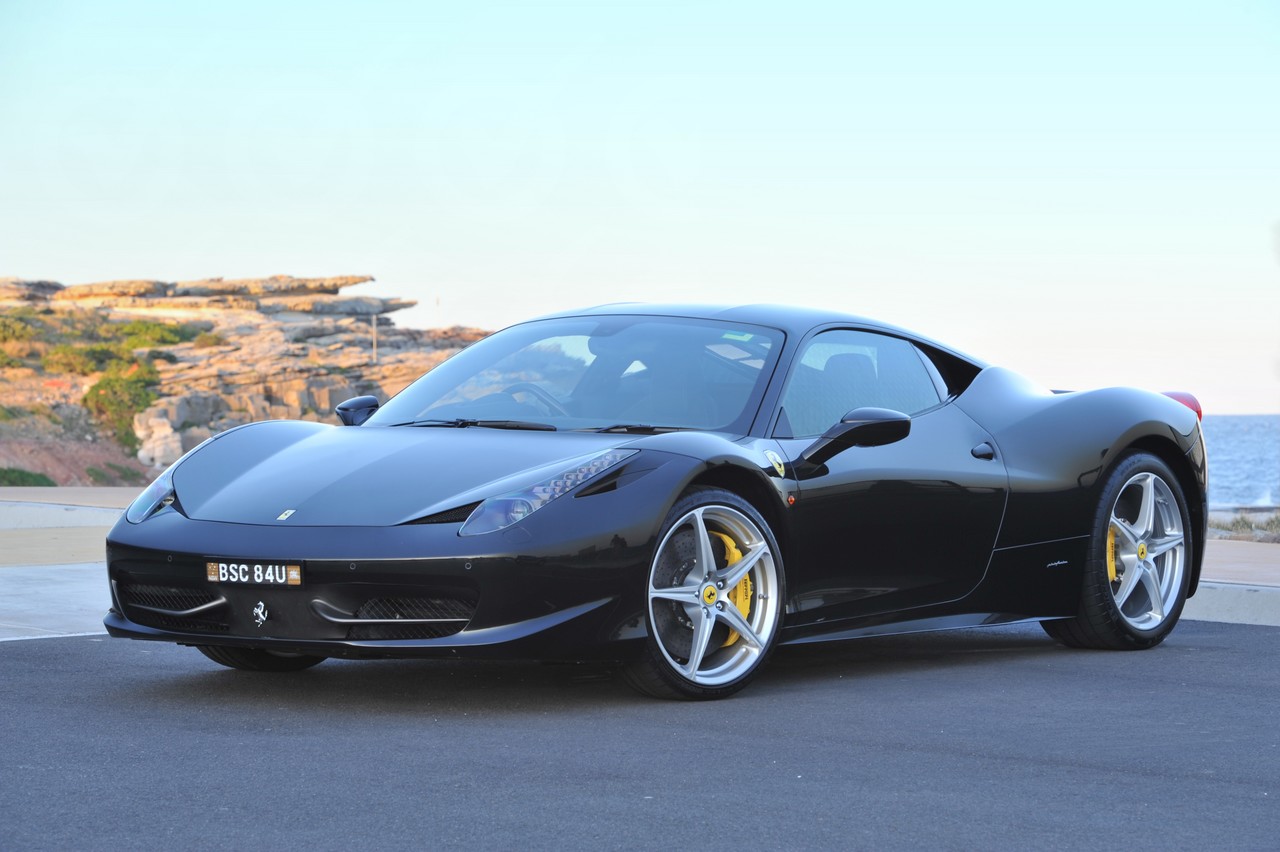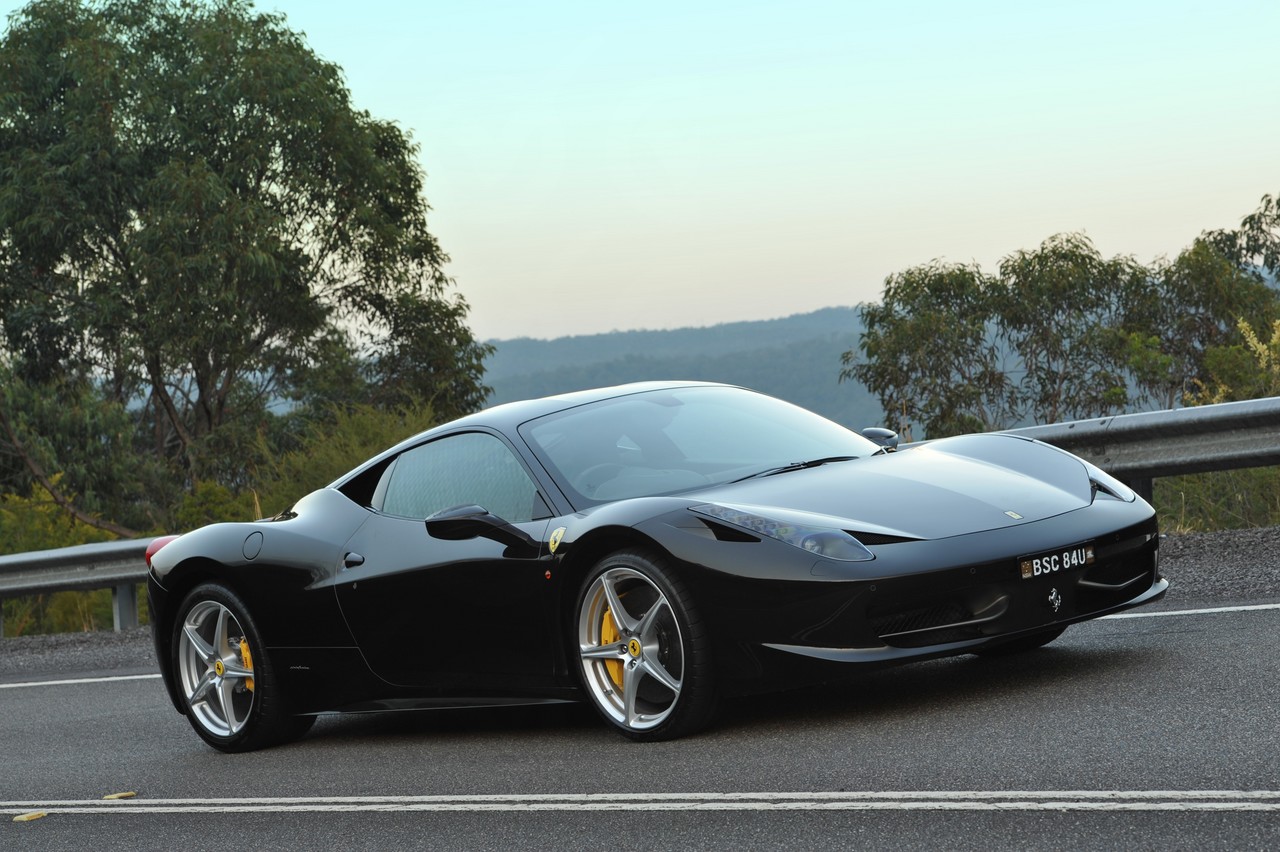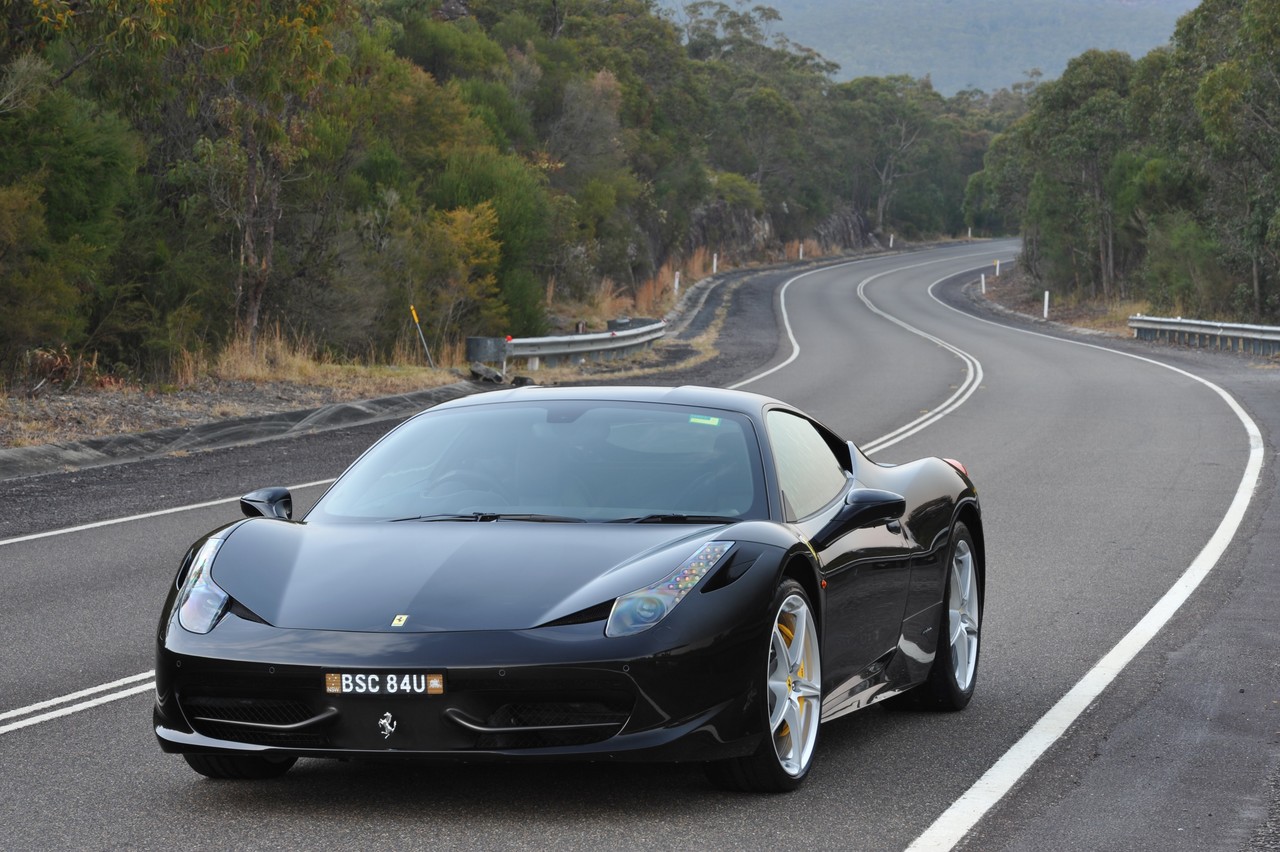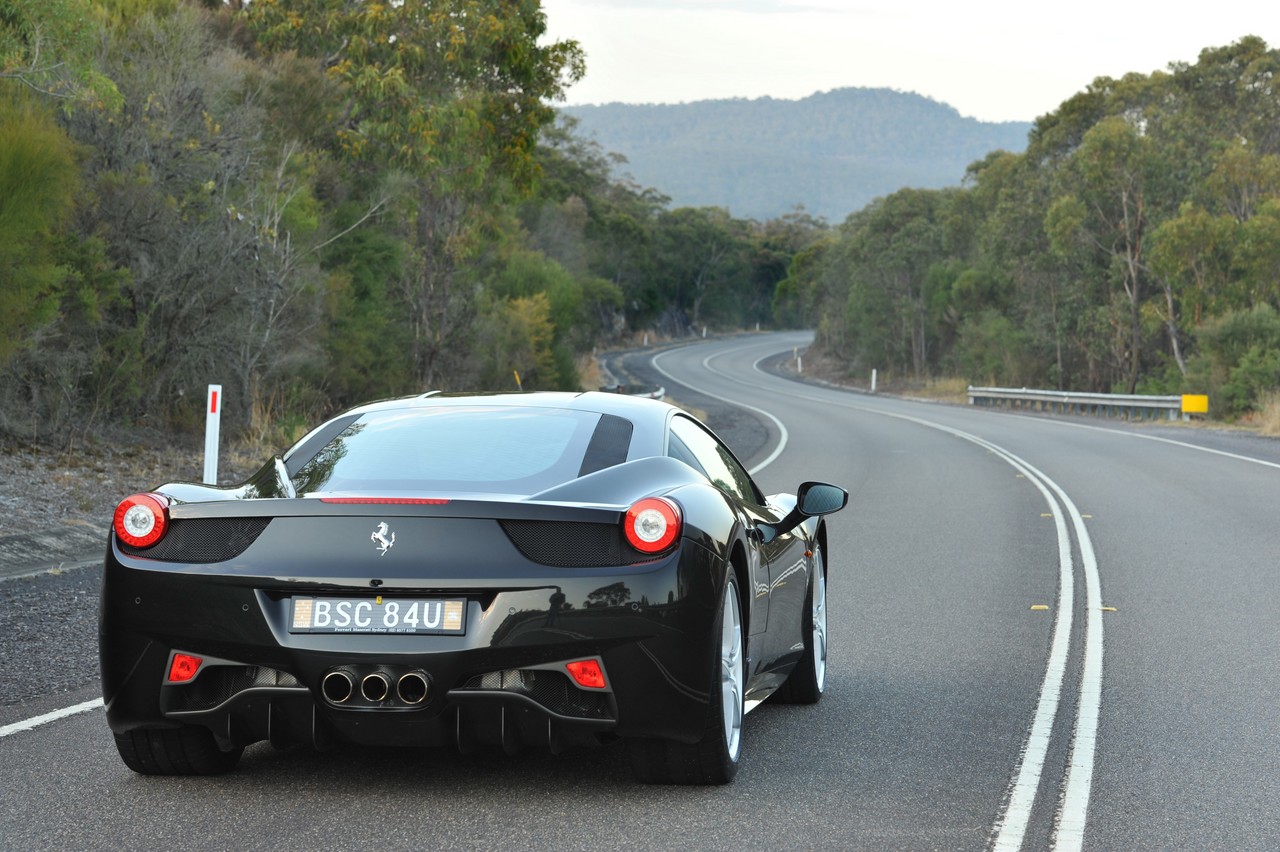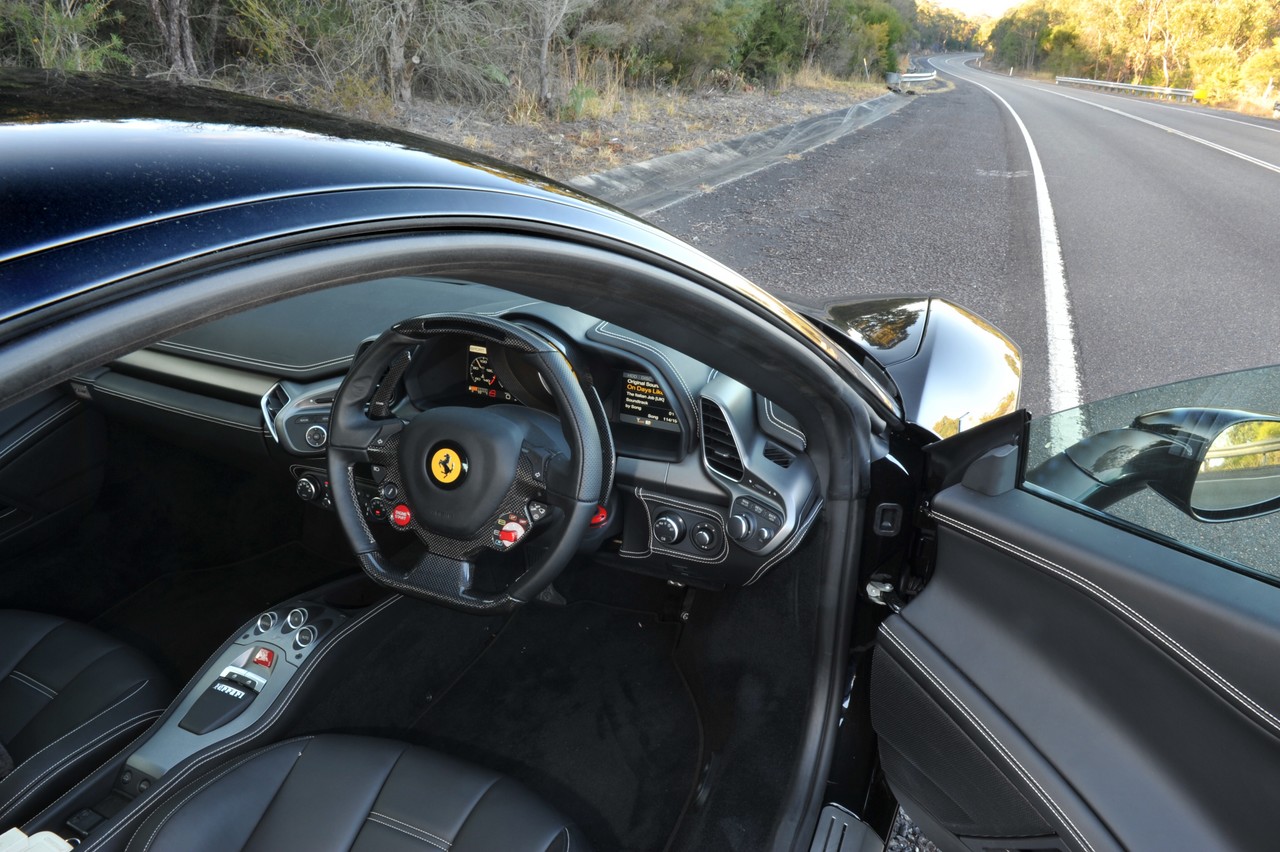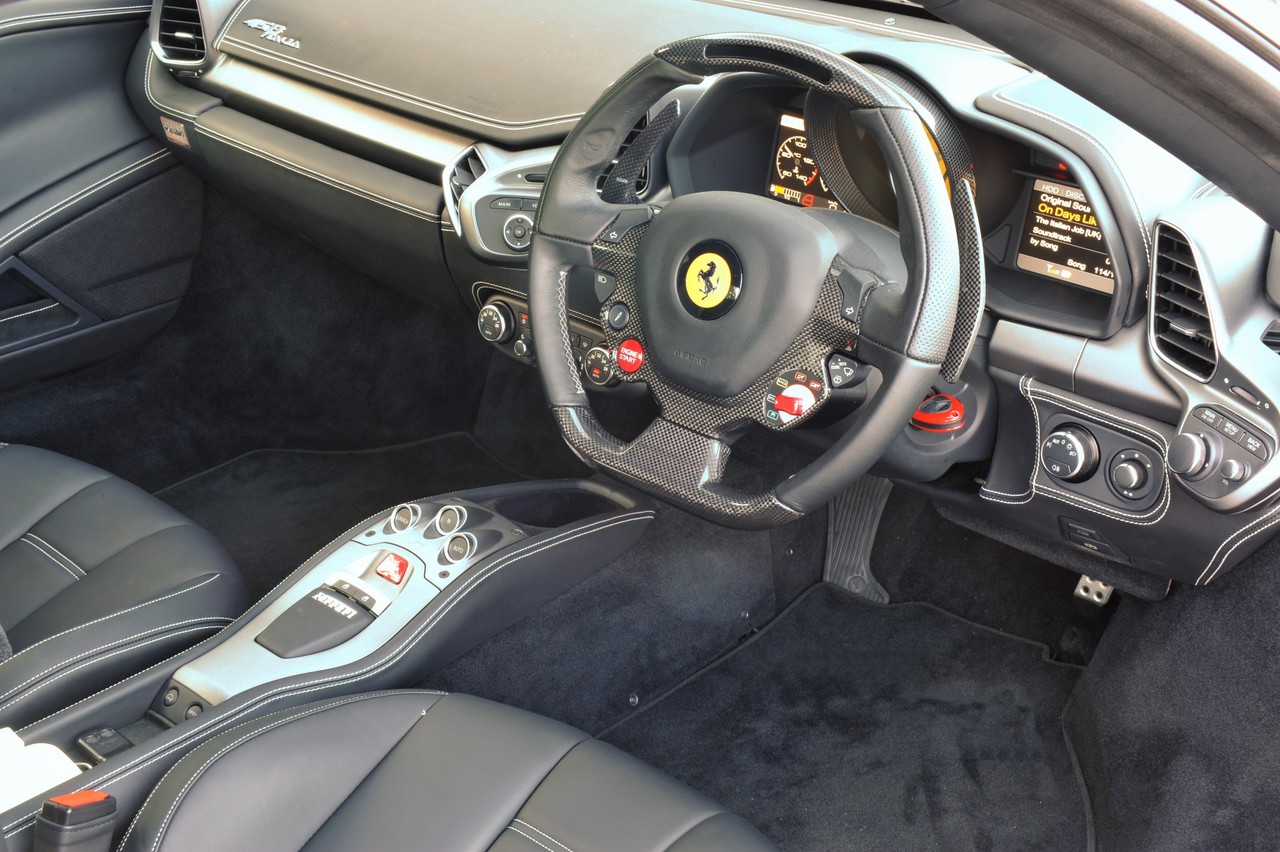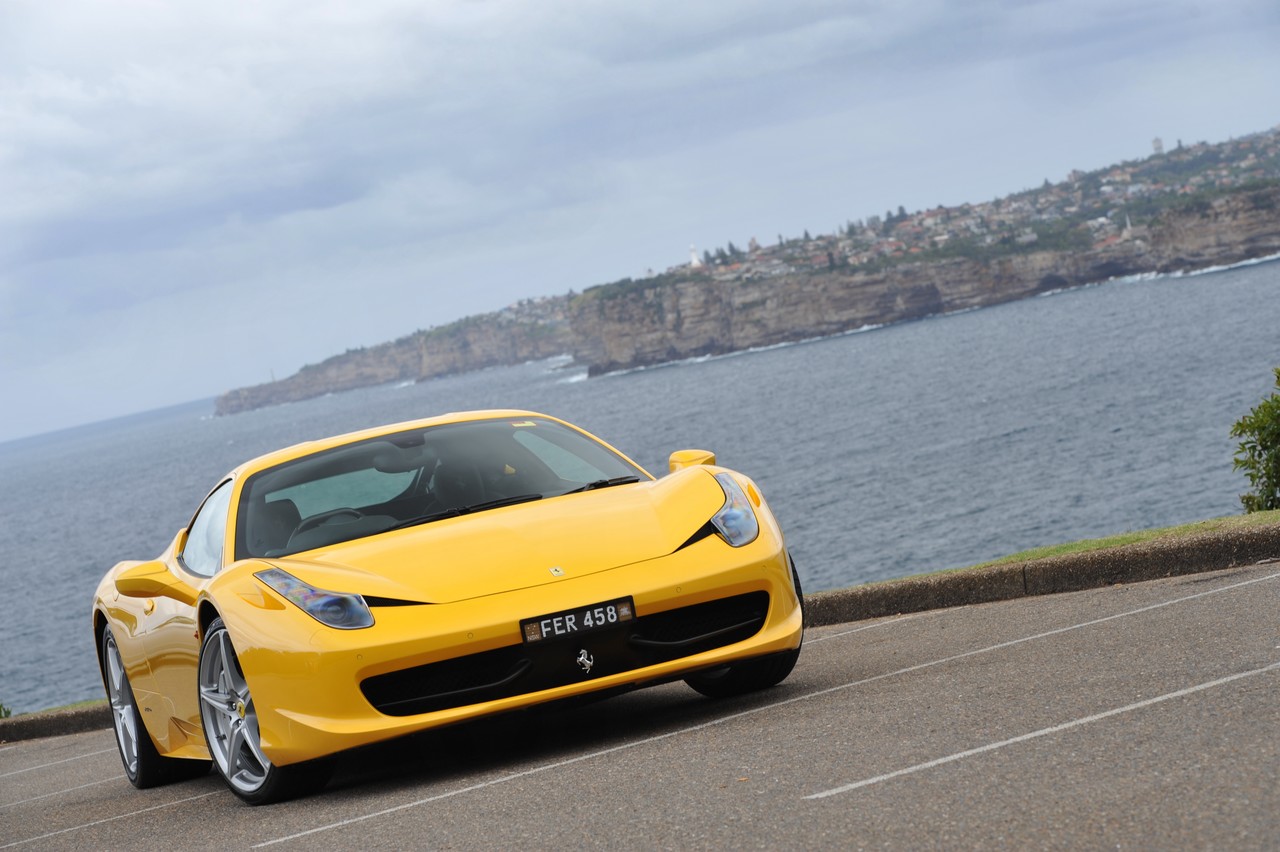
- Joyous, free-revving V8 engine
- Incredible dynamics
- Accurate, sensitive steering
- 458 Spider has open-top appeal and greater engine noise
- High maintenance costs
- Cluttered steering wheel and out-dated satellite navigation system
- Poor rear visibility
Overview
Released in June 2010, the Ferrari F142 458 was initially available as a two-seat coupe (the 458 Italia), with a two-seat convertible (the 458 Spider) following in 2012. Manufactured in Maranello, Italy, the rear-wheel drive Ferrari 458 was powered by a 4.5-litre direct-injection V8 petrol engine mated to a seven-speed Getrag dual-clutch transmission controlled via steering wheel gearshift paddles; an electronically controlled differential was also incorporated with the transmission housing. The 458 had double wishbone front suspension, a multi-link rear configuration and adaptive magnetorheological dampers.
Compared to the F430 which preceded it, the 458 Italia was 15mm longer (at 4527 mm), 14 mm wider (1937 mm), 1 mm lower (1213mm) and had a 50 mm longer wheelbase (2650 mm); with its all-aluminium chassis, however, the 458 Italia was also 70 kg lighter (with a dry mass of 1380 kg). Furthermore, the 458 Italia could accelerate from rest to 100 km/h in 3.4 seconds and had a top speed of 325 km/h.
Relative to the 458 Italia, the 458 Spider had revised accelerator pedal mapping and damping for its multi-link suspension and modified engine intake and exhaust systems. The 458 Spider was fitted with a fully retractable, two-piece aluminium roof with fixed rear buttresses. Furthermore, the roof could be opened or closed in approximately 14 seconds. The 458 Spider weighed 50 kg more than the 458 Italia.
| Years | Engine | Trans. | Peak power | Peak torque | |
|---|---|---|---|---|---|
| 458 Italia | 2010-15 | 4.5-litre petrol V8 | 7sp DCT | 419 kW at 9000 rpm | 540 Nm at 6000 rpm |
| 458 Spider | 2012-15 | 4.5-litre petrol V8 | 7sp DCT | 419 kW at 9000 rpm | 540 Nm at 6000 rpm |
| 458 Speciale | 2013 | 4.5-litre petrol V8 | 7sp DCT | 445 kW at 9000 rpm | 540 Nm at 6000 rpm |
| 458 Speciale A | 2014-15 | 4.5-litre petrol V8 | 7sp DCT | 445 kW at 9000 rpm | 540 Nm at 6000 rpm |
Safety equipment
Standard safety equipment for the Ferrari 458 included dual front airbags, front side airbags, ABS, electronic brake force distribution, brake assist, electronic stability control, traction control (‘F1-Trac’) and front seatbelt pretensioners.
Furthermore, the Vehicle Dynamic Assistance (VDA) system controlled settings for the engine, transmission, tyres and brakes and had five settings: Normal, Sport, Race, CT off and CST off.
Brakes
The 458 Italia and Spider had 398 mm by 36 mm front brake discs with six-piston calipers and 360 mm by 32 mm rear discs with four-piston calipers.
Features
Standard features for the Ferrari 458 included 20-inch alloy wheels, a six speaker sound system with a six-disc CD player and MP3-compatiblity, dual-zone climate control air conditioning, power adjustable and heated front seats, leather trim, Bluetooth connectivity, directional bi-xenon headlights, automatic headlights, rear fog lights, a leather-wrapped multi-function steering wheel, remote central locking, power windows and heated mirrors, a tilt-adjustable steering wheel, driver’s seat memory settings, alarm and immobiliser. Options included satellite navigation and parking sensors.
From late 2011, the 458 Italia was available with an optional HELE (‘High Emotion Low Emissions’) option pack which combined an idle stop system with a demand-sensitive fuel pump, air conditioning compressor and engine fans to minimise fuel consumption.
458 Speciale and 458 Speciale A
The 458 Speciale coupe was released in December 2013 as a special edition model with Australian and New Zealand deliveries limited to 60 vehicles. Released in late 2014, the 458 Speciale A adopted the same modifications as the Speciale, but with the Spider body.
The 458 Speciale and Speciale A had the most powerful naturally aspirated road-going engine ever produced, with changes including:
- A higher compression ratio of 14.0:1 (12.5:1 for the standard 458 engine);
- New geometry intake valves with 10 mm shorter inlet ducts and 5 per cent higher valve lift;
- A new camshaft profile for increased valve lift and reduced average pressure during the pumping cycle;
Reduced internal friction; - Lighter pistons; and,
- A redesigned crankshaft
As a result, the 458 Speciale could accelerate from rest to 100 km/h in 3.0 seconds and to 200 km/h in 9.1 seconds; top speed was 325 km/h.
The 458 Speciale had a dry weight of 1290 kg, 90 kg lighter than the 458 Italia. To achieve this, mass reduction measures included:
- 20-inch forged wheels which were 12 kg lighter;
- A Lexan panel instead of a glass rear window;
- Carbon fibre engine bay panels;
- Composite bumpers;
- Carbon-fibre shells for the Sabelt seats;
- Alcantara and carbon-fibre interior trim; and,
- The infotainment system was omitted.
To improve aerodynamic efficiency, the 458 Speciale was fitted with two vertical flaps at the front of the car and a lower horizontal flap. At low speeds, the vertical flaps would close to channel air into the radiators. At speeds above 170 km/h, however, the vertical flaps would open to reduce drag. At speeds over 220 km/h, the horizontal flap would lower to balance downforce between the front and rear axles. Other aerodynamic measures included turning vanes at opposite ends of the front bumper, a larger rear spoiler and a new rear diffuser (with repositioned tailpipes).
Other changes for the 458 Speciale included:
- An upgraded braking package with HT2 brake discs, Extreme Design calipers and brake pads made from HY hybrid material;
- Specially-produced Michelin Pilot Sport Cup2 tyres;
- New control logic for the DCT; and,
- A Side Slip Angle Control (SSC) function which permitted ‘controllable oversteer’.
Related links
